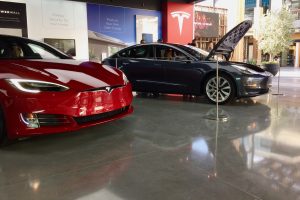- 🚗 Tesla’s NACS (Non-Automaker Charging Stations) is becoming the de facto standard for EV charging in North America.
- 🌐 Over 90% of EV manufacturers, including major Japanese brands like Nissan, Honda, and Toyota, have committed to using NACS.
- 🛣️ Tesla’s Supercharger network, now referred to as NACS, has over 1,782 locations in the US, making long-distance travel routine for Tesla owners.
- ⚡ NACS offers high reliability and efficiency, with Tesla having agreements for over 3,941 hotels with slower L2 “Destination Chargers.”
- 📈 The NACS standard adoption gained momentum with announcements from major automakers like Ford and GM, with a total of 22 companies planning to use or enable NACS in their cars.
- 🌍 NACS is not just for automakers; charging station manufacturers like Electrify America, ABB E-Mobility, ChargePoint, and others plan to add NACS plugs to their stations.
- 💰 Several automakers, including BMW, GM, Honda, Hyundai, Kia, Mercedes-Benz, and Stellantis, plan to invest at least $1 billion in a joint venture to build 30,000 charging ports in the US and Canada.
- 🔌 Tesla owners can access both Tesla’s Supercharger network and other CCS charging stations using an adaptor, providing flexibility for charging.
- 📈 The EV market’s rapid growth puts pressure on Tesla’s Supercharging network, requiring continuous expansion to meet increasing demand.
- 🌐 A consortium of EV manufacturers called ChargeX, backed by the US Department of Energy, aims to improve public EV charging reliability and usability by June 2025.
- 🤔 Stellantis (Jeep, Dodge, Chrysler, Fiat, Ram, etc.) remains a major laggard in adopting the NACS standard, while the momentum suggests that more EV manufacturers will commit soon.
The landscape of electric vehicle (EV) charging in the United States is undergoing a significant shift, with Tesla’s NACS (Non-Automaker Charging Stations) emerging as a pivotal player. Understanding the nuances of this transition is crucial for both EV enthusiasts and industry stakeholders.
The Rise of Tesla’s NACS
Tesla’s NACS, a bold venture into non-automaker-operated charging stations, marks a strategic move to redefine the EV charging infrastructure. With a focus on accessibility and efficiency, Tesla aims to address the evolving needs of the growing EV market.
NACS Expansion Strategy
Tesla’s NACS expansion strategy involves strategically placing charging stations in key locations, ensuring comprehensive coverage across the nation. This approach aims to eliminate range anxiety and promote the widespread adoption of electric vehicles.
Impact on the EV Ecosystem
Compatibility and Accessibility
One of the key aspects of Tesla’s NACS is its compatibility with a variety of electric vehicles, not limited to Tesla models. This inclusivity enhances accessibility for EV owners, fostering a collaborative ecosystem where multiple brands can benefit from a shared charging infrastructure.
Charging Speed and Efficiency
Tesla’s NACS emphasizes high-speed charging capabilities, significantly reducing the time required for EVs to recharge. This focus on efficiency aligns with the increasing demand for faster charging solutions, enhancing the overall convenience for EV users.
Q&A Section
Q: How does Tesla’s NACS differ from traditional automaker-operated charging networks?
A: Tesla’s NACS represents a departure from the norm by being a non-automaker-operated charging network. It is designed to be inclusive, supporting various EV models, and prioritizes speed and efficiency.
Q: What impact does NACS have on the existing EV charging infrastructure in the US?
A: Tesla’s NACS introduces a paradigm shift, influencing the landscape of EV charging infrastructure in the US. Its strategic expansion aims to provide widespread coverage, positively impacting the accessibility and efficiency of EV charging.
Q: How does the NACS expansion contribute to Tesla’s overall vision for sustainable transportation?
A: The NACS expansion aligns with Tesla’s broader vision of accelerating the world’s transition to sustainable energy. By enhancing the charging infrastructure, Tesla aims to promote the widespread adoption of electric vehicles, contributing to a more sustainable transportation ecosystem.





